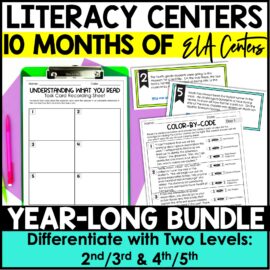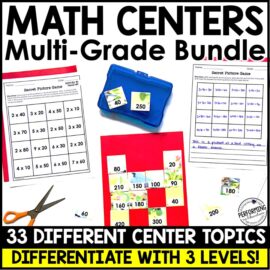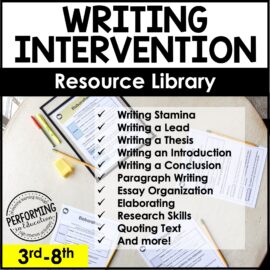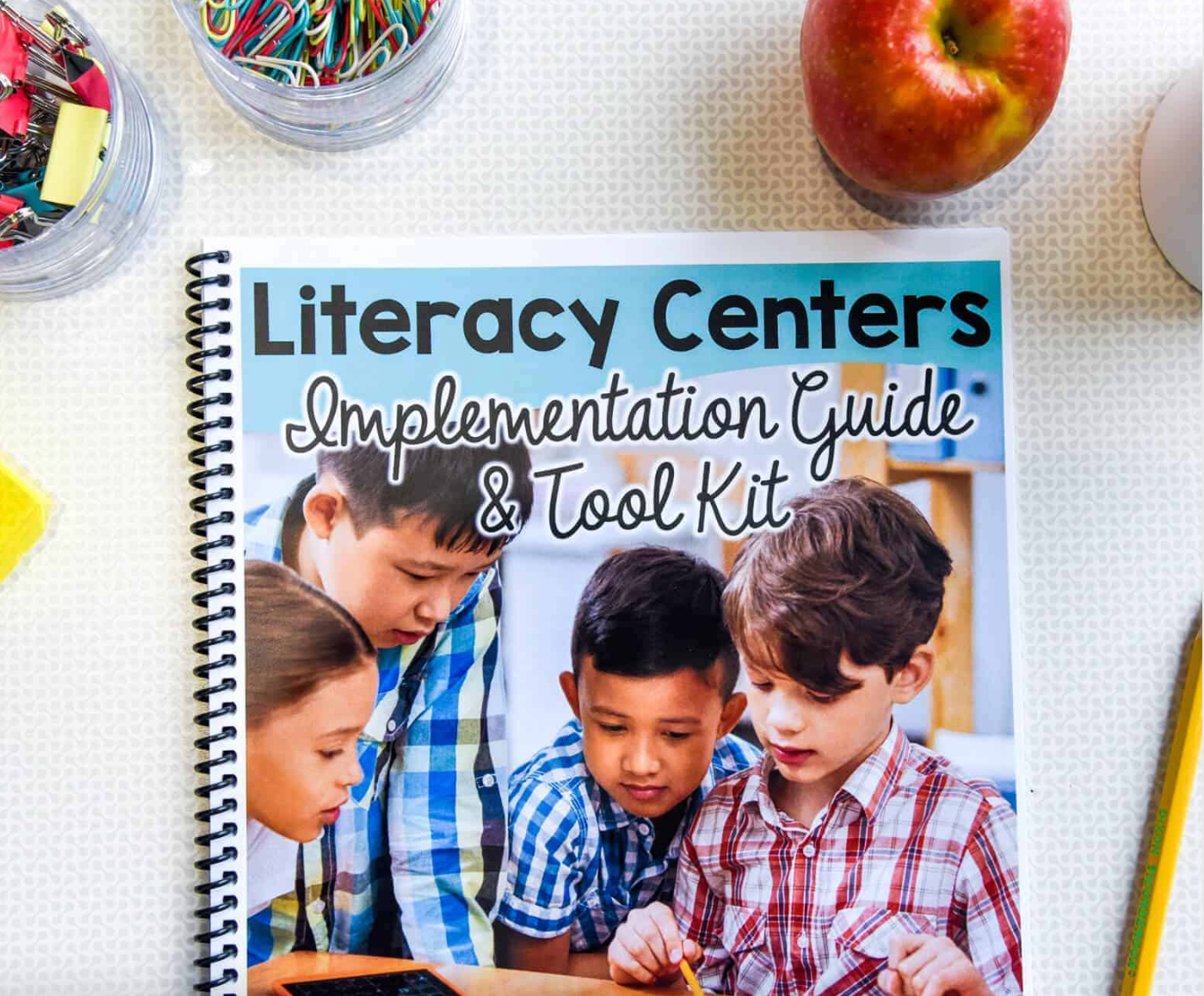For my first year of teaching, I had 28 fifth graders whose ability levels ranged from kindergarten to 8th grade. They don’t prepare you for not having many kids who are actually on the grade level when you’re getting ready to become a teacher. It’s frustrating, as a teacher, when you’re trying to deliver a fantastic lesson that all of the students understand.
So, I’m going to share with you what I learned about differentiating instruction without needing extra planning or prep time.
One of the things we know is that if we had fewer students and more prep time, it would be a lot easier. But, unfortunately, with the staff we have right now, it’s challenging. So, these are the differentiation strategies I’ve learned over the years that have worked with large class sizes and students who are very different in ability level.
1. Choose cheerleaders
Pair your students with a cheerleader. We often support our teaching by pairing students struggling with our high flyers. But, unfortunately, we see the high flyers get a little frustrated or just give the student the answer.
I’ve found that it’s better to have my students who are the biggest cheerleaders work with the students struggling the most. This allows me to have those students who are close to getting it get more practice by helping that student who is struggling.
The really high flyers already have it, and it may not help them as much to explain it to others the way it does for the students who are just grasping it.

2. Use scaffolding
Give support through organizers to all of your students. If you’re working with whole group, small group, or one-on-one, you should have a really simple organizer that students can use for all subjects. It makes it really easy if you use similar organizers across the board because students will understand what they do and use them in the different subject areas.
These organizers are visual aids that will help support all of your learners.
I’m also differentiating when doing a whole group mini-lesson with my class. I’m always working with those students on the lower end who need a little extra help. I’m providing resources for them to all of the students.
For example, if we need to throw in some sentence frames for my English language learners, it will not hurt my high flyers. Sentence frames are great. If students need them, they’ll use them. If they don’t need them, they won’t use them. So it’s not a big deal to throw them into the lessons.
This also allows you to provide struggling students with the needed resources without singling them out in the class. Instead, we can just give them to all students to use as they need.
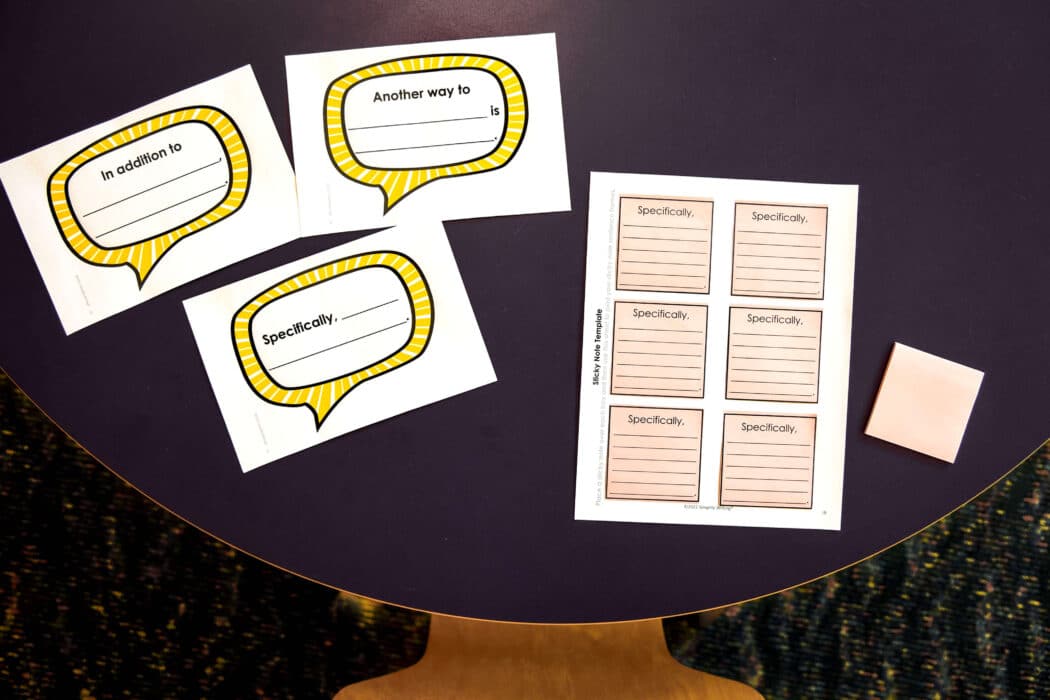
3. Modify one activity
This tip is my favorite, but it takes a little more practice. You take one activity and make it simpler for the students that need it simpler and more advanced for the students who need it more advanced.
It is classic differentiation.
For example, if I have a writing lesson with my class on writing an introduction paragraph. I may have students who can barely write a sentence and ones who can write at a middle-school level. And then there may be students who fall in between the two.
So, I do my lesson to show them how to write the introduction paragraph. Then I take the group of students that can’t write a paragraph and pull them into a group to work on writing one really awesome introduction sentence.
Then I give the high flyers students a couple extra tasks to work on, but I don’t single them out. Instead, I share some additional things students can attempt if they finish their introduction paragraph. You’ll be surprised how many students, even those who aren’t ready for those skills, try it because it’s a challenge.
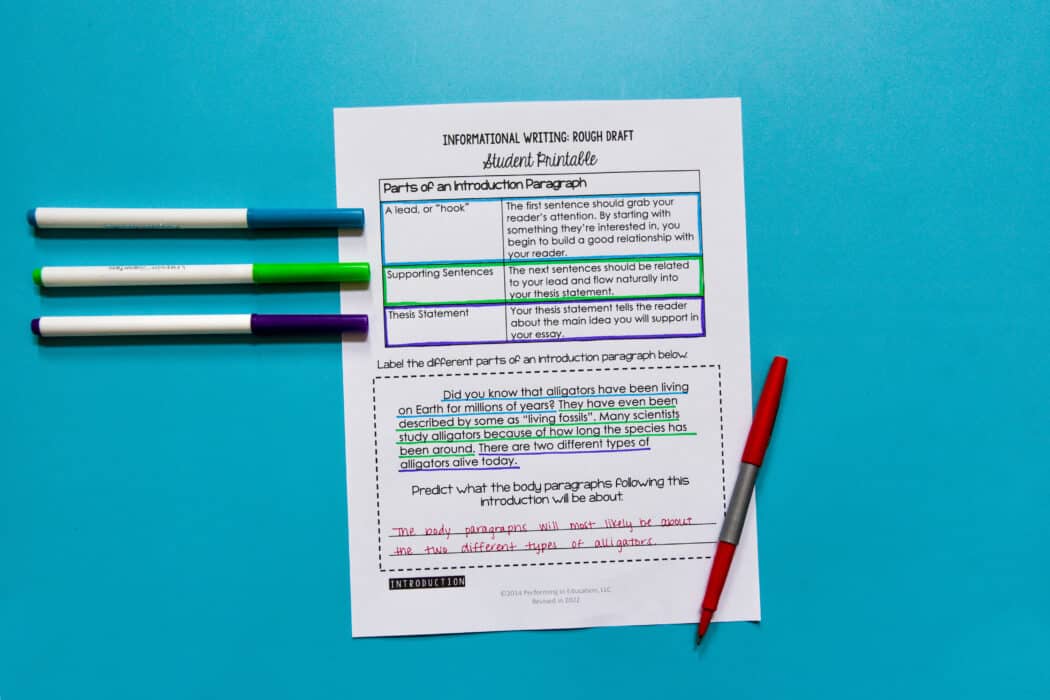
4. Praise them all
This tip is more of a classroom climate thing than a differentiation strategy. It is so important to keep everything very positive. Students who are struggling have usually experienced that struggle for years and years if you teach upper elementary.
So, I know these students know that they struggle, and because of that, they lack confidence. So, I like to find ways to praise them and give them a confidence boost.
In the above example of struggling students writing one sentence, I make a huge deal about that sentence when it’s finished. If the student can’t write the sentence, look for something they did that day that they struggled with before. Did they write a single word at the beginning and capitalize it? That’s awesome.
Being positive is very important. We can get easily frustrated when we have a lot of students. We’re trying to help all of them reach their potential, but a few aren’t compliant, are having a bad day, or just don’t know what to do with them anymore.
So, it’s important to think about the attitude we have toward those students because all of our students are capable of improving. But, many won’t improve until they have that confidence, which we can help them gain.

5. Reduce note-taking
Note-taking is one area where I have an unpopular opinion. I hate note-taking during whole group mini-lessons. I have a lot of students that struggle with it, especially my English language learners. We also have students who focus more on note-taking than on the actual lesson.
I suggest you provide a simpler note-taking activity when doing mini-lessons. Look at what you usually do and find ways to simplify it. Or, just get rid of note-taking completely.
I know it’s a very unpopular opinion. But hear me out. When students are taking notes, they might be retaining and memorizing information, but if I provide an active mini-lesson, my students are engaged and shouting out answers and ideas to me. They are helping me solve a problem, write a specific sentence, and actively participate.
So, while I see value in having them write notes, I think there is a lot of retention when they actively participate in the lesson instead. This also allows us to focus on the activity and discussion and ask questions instead of having the specific notes they should be taking.
For me, fill-in-the-blank notes don’t work. If you’ve ever had them in teacher training, you know you’re just listening for the word to put in the blank. I want my students to be actively engaged.
So, instead of note-taking, they may write down brainstorming ideas or work on the problem with me. That is technically note-taking, but it’s not something we have set up with specific words to write or where to write them. It’s something we do together.

6. Centers and Interventions
Centers and interventions are my best differentiation strategy and the most effective. But they involve the most resources and prep time. However, I have complete resource libraries (which I will share below)that allow me to pull lots of different level activities so I can differentiate for students.
Centers
We are used to using centers primarily for ELA and math. Centers allow me to individualize learning for students by having them rotate through activities based on their ability level. So, being able to differentiate is so important when talking about centers.
You may have a centers activity that you found online, and it’s for just fifth grade, and that’s fantastic. But what about your students that aren’t ready to tackle that skill? For example, maybe you’re working on long division, but they still need to work on very basic division. So it is really important to have a similar center that is a couple of grade levels down and works on basic division to help them move toward grade level.
That is what I have in this Math Centers Multi-Grade Bundle, and I highly recommend you check it out. You can choose your grade level or multiple grade levels, allowing you to easily differentiate for all students.
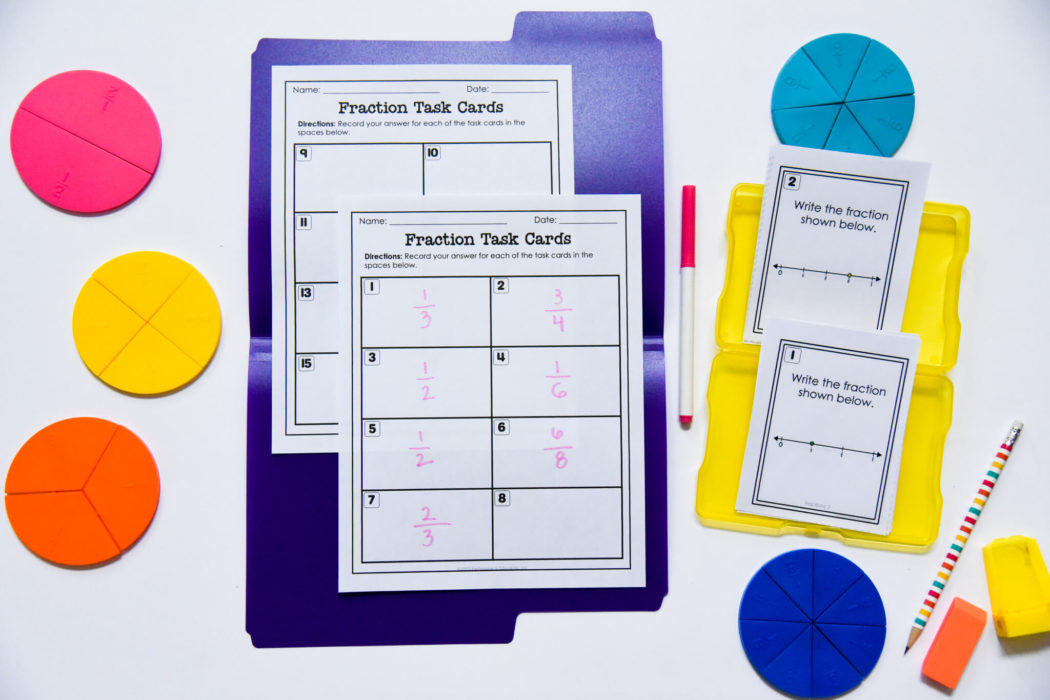
Interventions
The next thing that’s key in addition to centers is doing interventions. You can do interventions during centers time or during independent work time. We know a lot about math and reading interventions because it’s encouraged in schools, and sometimes we rotate groups with other teachers. It’s usually something that is a part of our day.
But writing interventions usually aren’t, even though writing is a subject where we really need interventions because our students are at very different levels. So I created this Writing Intervention Library.
Suppose I have a group of students struggling with elaboration, or maybe the whole class is struggling. In that case, I can differentiate and stop the usual lesson if the whole group needs it and pull the intervention.
Sometimes we need to differentiate as a whole group and not just for a group of students. Sometimes we need to stop where we are in the writing process because every student in the class needs to learn and practice a certain skill.
Interventions are a good way to spend 10-15 minutes on a particular topic to help students improve these skills. I use the biggest bang for my buck when I use interventions during writing.
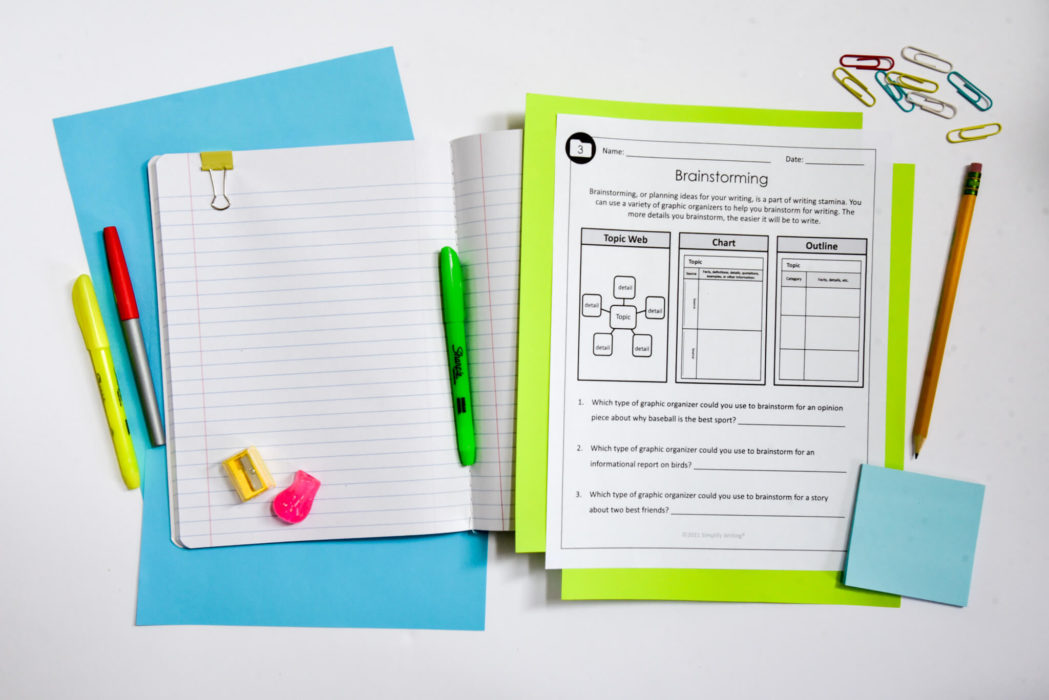
The more you can fit in things like centers and intervention, the easier it will be for you to differentiate for students. You’re giving on-grade-level lessons but working with individual students on the skills they need for the lesson. Doing this allows you to continue slowly moving them toward grade-level skills.
Want to know more?
If you’re interested in learning more about differentiation strategies and how I use engaging mini-lessons and games in my classroom, subscribe to my YouTube channel. I have lots of new videos coming about those topics.
If you are struggling or spending too much time trying to track down what you’re individual students need, I encourage you to look at my resource libraries:
These libraries allow you to grab what you need quickly to put them into place in your classroom. My goal is to make this process simple for you. I think differentiation is key for helping students move toward grade level or at least show improvement.
It is a big deal when we put these strategies in place in our classrooms because you’ll see a huge difference in how students react to the material. They become more positive and excited about learning. And they start to fill in those gaps you didn’t see improvement in before.
